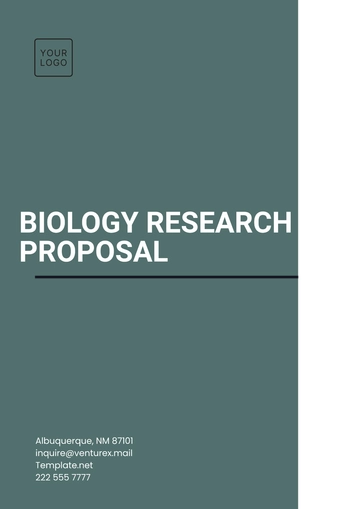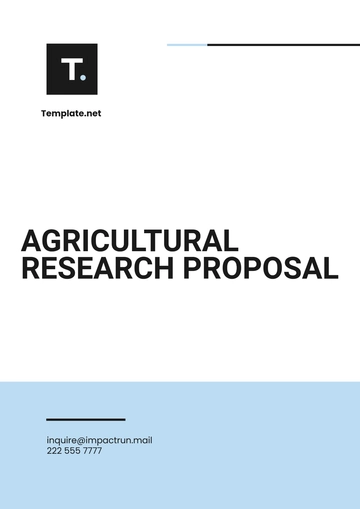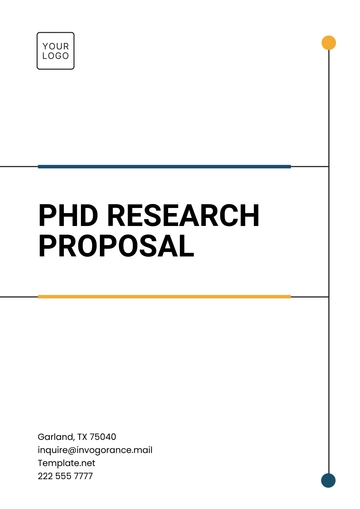Free Cultural Heritage Research Proposal

Researcher: [Your Name]
Date: [Date]
I. Introduction
Cultural heritage represents the rich tapestry of tangible and intangible artifacts, traditions, monuments, and practices handed down through generations. It includes physical objects like artifacts and monuments, as well as intangible aspects such as oral traditions and rituals. This research proposal aims to explore, document, and preserve these essential elements of cultural heritage, with a focus on local traditions, historical artifacts, significant monuments, and enduring practices. Preserving cultural heritage is crucial for sustaining community identity, and continuity, and fostering a shared sense of history for future generations.
II. Objectives
To Document and Analyze Traditional Practices: Investigate traditional practices, their historical evolution, and contemporary relevance.
To Identify and Catalog Historical Artifacts and Monuments: Create a comprehensive catalog of cultural artifacts and monuments of historical importance.
To Assess the State of Cultural Heritage Sites: Evaluate the current condition of cultural heritage sites and recommend preservation strategies.
To Engage Local Communities: Involve local communities in the preservation and promotion of their cultural heritage.
To Disseminate Findings: Share research results through academic journals, public exhibitions, and digital platforms to enhance public understanding and appreciation.
III. Literature Review
Research highlights the critical role of cultural heritage in community identity and historical continuity. The World Heritage Convention (UNESCO, 2050) stresses the importance of safeguarding both tangible and intangible cultural assets. Johnson (2052) expands on the concept of "living heritage," encompassing practices, expressions, and traditional knowledge. Recent advancements in digital technologies, such as augmented reality and blockchain for provenance tracking, offer innovative methods for documenting and preserving cultural heritage (Miller & Lee, 2055). These studies provide a robust foundation for this research and underscore the need for continuous investigation in this field.
IV. Methodology
The research will employ a mixed-methods approach to ensure a thorough understanding of the cultural heritage landscape.
A. Data Collection
Ethnographic Fieldwork: Conduct participant observation and in-depth interviews with local community members to gather insights into traditional practices.
Digital Documentation: Utilize digital photography, 3D scanning, and augmented reality to document artifacts and monuments.
Surveys: Administer surveys to collect quantitative data on community engagement and perceptions of cultural heritage.
B. Data Analysis
Qualitative Analysis: Use content analysis to interpret data from interviews and field observations.
Quantitative Analysis: Apply statistical methods to survey data to identify trends and patterns.
Preservation Strategies: Develop and recommend preservation strategies based on research findings, in collaboration with local authorities and heritage organizations.
V. Timeline
Phase | Duration | Description |
|---|---|---|
Literature Review | 3 months | Comprehensive review of existing literature, identification of research gaps, and development of theoretical framework. |
Fieldwork | 9 months | Data collection through ethnographic methods, surveys, and digital documentation. |
Data Analysis | 4 months | Analysis of collected data, including qualitative and quantitative interpretation. |
Report Writing | 3 months | Compilation of findings, drafting, and revision of the final research report. |
Dissemination | 3 months | Presentation of findings through academic publications, public exhibitions, and digital platforms. |
VI. Budget
Item | Cost |
|---|---|
Fieldwork Expenses | $15,000 |
Digital Equipment | $8,000 |
Software and Tools | $3,000 |
Personnel Costs | $25,000 |
Publication and Dissemination | $5,000 |
Miscellaneous | $3,000 |
Total | $59,000 |
VII. Significance
This research project is of paramount importance for several reasons:
Preservation of Cultural Heritage: Ensuring the survival of cultural heritage is crucial for maintaining community identity and continuity.
Policy and Preservation Insights: Providing data-driven recommendations for policy and preservation efforts will aid in the effective management of cultural heritage sites.
Community Engagement: Engaging local communities will foster a sense of pride and active participation in cultural preservation.
Academic and Public Contribution: The dissemination of findings will contribute to the academic field and provide educational resources for the broader public, enhancing global awareness and appreciation of cultural heritage.
VIII. References
Giaccardi, E., & Palen, L. (2055). The social production of heritage through cross-media interaction: Making a place for place-making. International Journal of Heritage Studies, 20(3), 281-297.
Johnson, R. (2052). Living Heritage: Practices, Expressions, and Knowledge. Heritage Studies Quarterly, 15(1), 45-62.
Miller, T., & Lee, S. (2055). Innovations in Digital Heritage: Augmented Reality and Blockchain Applications. Journal of Digital Preservation, 10(4), 215-233.
UNESCO. (2050). Convention Concerning the Protection of the World Cultural and Natural Heritage.
- 100% Customizable, free editor
- Access 1 Million+ Templates, photo’s & graphics
- Download or share as a template
- Click and replace photos, graphics, text, backgrounds
- Resize, crop, AI write & more
- Access advanced editor
Preserve the past with a well-crafted Cultural Heritage Research Proposal using Template.net’s editable and customizable template. This template provides a comprehensive structure to present your research objectives, preservation methodologies, and cultural impact. Editable in our Ai Editor Tool, it allows you to tailor each section to your specific research focus, ensuring a detailed and professional proposal.
You may also like
- Business Proposal
- Research Proposal
- Proposal Request
- Project Proposal
- Grant Proposal
- Photography Proposal
- Job Proposal
- Budget Proposal
- Marketing Proposal
- Branding Proposal
- Advertising Proposal
- Sales Proposal
- Startup Proposal
- Event Proposal
- Creative Proposal
- Restaurant Proposal
- Blank Proposal
- One Page Proposal
- Proposal Report
- IT Proposal
- Non Profit Proposal
- Training Proposal
- Construction Proposal
- School Proposal
- Cleaning Proposal
- Contract Proposal
- HR Proposal
- Travel Agency Proposal
- Small Business Proposal
- Investment Proposal
- Bid Proposal
- Retail Business Proposal
- Sponsorship Proposal
- Academic Proposal
- Partnership Proposal
- Work Proposal
- Agency Proposal
- University Proposal
- Accounting Proposal
- Real Estate Proposal
- Hotel Proposal
- Product Proposal
- Advertising Agency Proposal
- Development Proposal
- Loan Proposal
- Website Proposal
- Nursing Home Proposal
- Financial Proposal
- Salon Proposal
- Freelancer Proposal
- Funding Proposal
- Work from Home Proposal
- Company Proposal
- Consulting Proposal
- Educational Proposal
- Construction Bid Proposal
- Interior Design Proposal
- New Product Proposal
- Sports Proposal
- Corporate Proposal
- Food Proposal
- Property Proposal
- Maintenance Proposal
- Purchase Proposal
- Rental Proposal
- Recruitment Proposal
- Social Media Proposal
- Travel Proposal
- Trip Proposal
- Software Proposal
- Conference Proposal
- Graphic Design Proposal
- Law Firm Proposal
- Medical Proposal
- Music Proposal
- Pricing Proposal
- SEO Proposal
- Strategy Proposal
- Technical Proposal
- Coaching Proposal
- Ecommerce Proposal
- Fundraising Proposal
- Landscaping Proposal
- Charity Proposal
- Contractor Proposal
- Exhibition Proposal
- Art Proposal
- Mobile Proposal
- Equipment Proposal
- Student Proposal
- Engineering Proposal
- Business Proposal





























